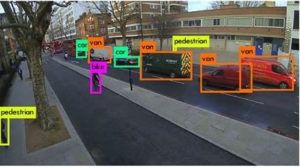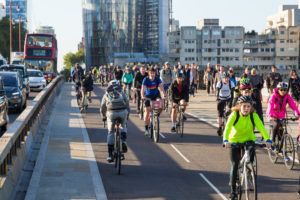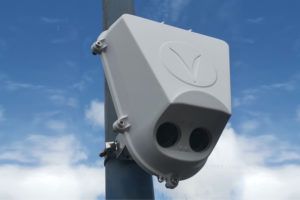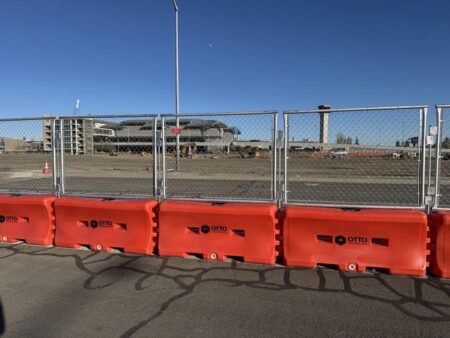A UK-first trial of artificial intelligence (AI) technology from Vivacity Labs is making it much easier for Transport for London (TfL) to understand how bicyclists and pedestrians are using the UK capital’s road network.
As part of its long-term aim of reducing the number of private vehicles on the city’s roads and improving air quality, TfL is trialling the use of AI-based data to help plan new routes as it expands its growing cycling network. TfL is working with Vivacity Labs, an innovative London-based technology firm that provides AI-processed hyperlocal data. Until now, TfL has relied mainly on manual traffic counts to work out how many people are cycling on any given road. This helps assess demand for new cycle routes and helps the agency improve how it operates the road network for the growing numbers of people cycling. Manual traffic counts, which are carried out at limited locations on London’s road network, are only able to give a snapshot of road use on the given day or time.
Since 2018, TfL has trialled using Vivacity Labs’ sensors at two busy locations along Millbank. The sensors use AI to detect road users and decide which mode of transport they are using. The competitive trial showed that the Vivacity sensors are up to 98% accurate. The sensors gather data around the clock, which provides a significantly more detailed picture of how the city’s roads are being used by everyone 24/7. All video captured by the sensors is processed and discarded within seconds, meaning that no personal data is ever stored. TfL is in the process of introducing 43 more Vivacity sensors at 20 central London locations to gather additional data and conduct further tests to understand the full range of capabilities the technology has to offer.
Data about the numbers of people cycling is a vital part of TfL’s planning for new cycleways across London. As the network continues to grow, TfL will use data from sources such as the sensors to work out where investment in new infrastructure can best be targeted. Enabling more people to walk and cycle is central to the Mayor’s efforts to tackle London’s air pollution. The Mayor’s Transport Strategy target is for 80% of all journeys in London to be made by walking, cycling and public transport by 2041.

As well as accurately detecting people cycling, the Vivacity sensors also detect people walking and other types of traffic, including cars, trucks, vans, motorcyclists and buses, which will lead to a much better understanding of demand on the road network and how TfL can balance it. The sensors are part of a wider programme of modernisation of TfL’s current road network systems and have the potential to link up to London’s traffic signals and control centre systems to provide data in real-time, which could enable the agency to better balance demand and improve how it manages congestion.
“We work around the clock to keep people in London moving and we’re always looking for innovative new ways of making our roads safer and more efficient,” explained Glynn Barton, TfL’s director of network management. “New data from trials such as this will be really valuable as we invest and make day-to-day decisions to enable more people to walk and cycle.”






